#shinne layouts
Explore tagged Tumblr posts
Text
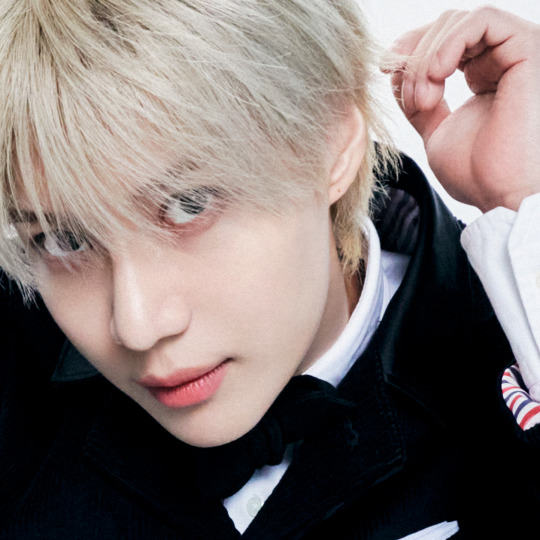
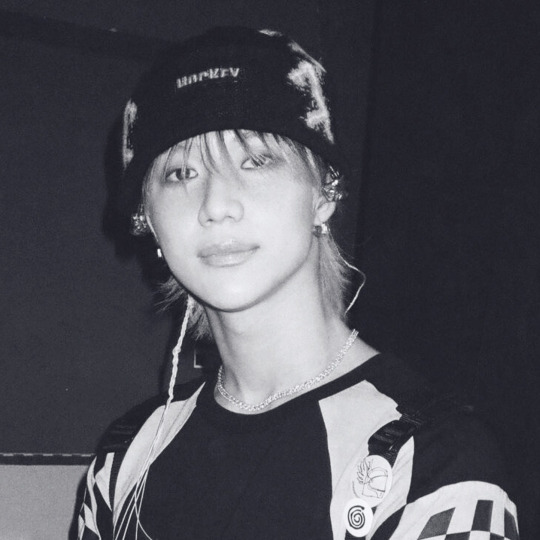
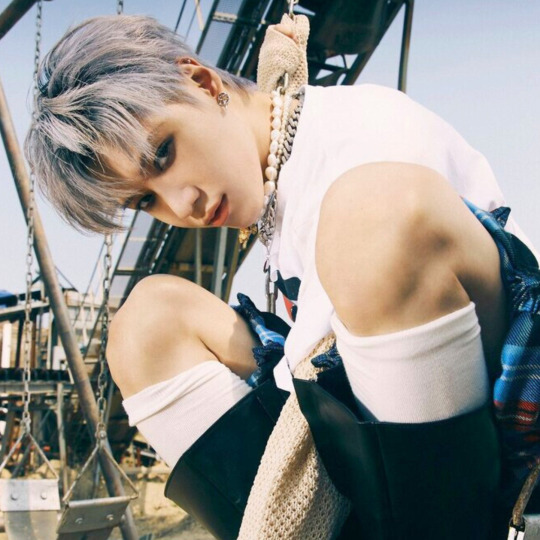
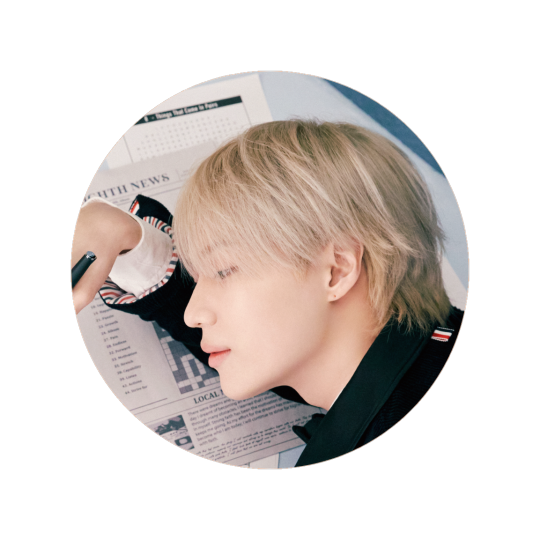
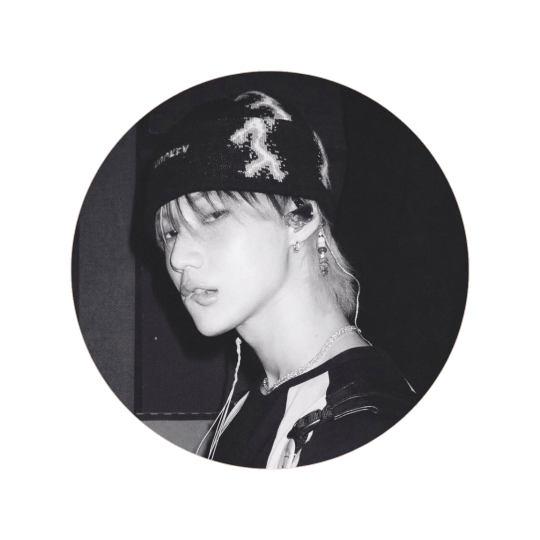
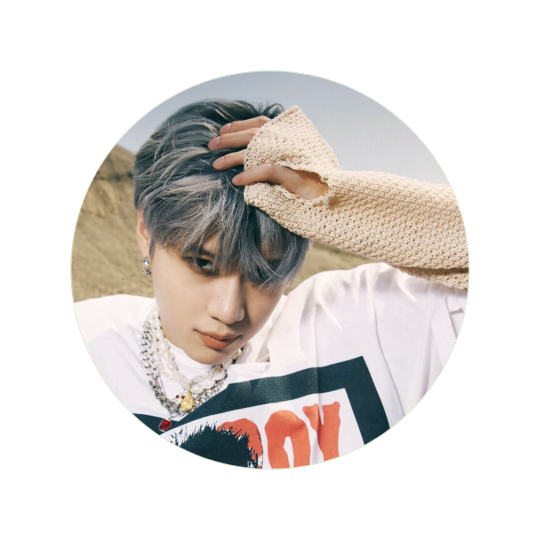

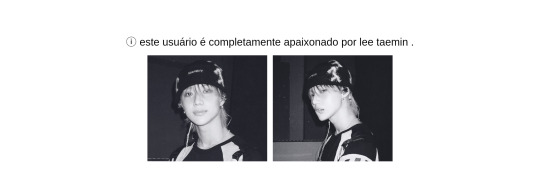


★. . taemin layouts 𖹭
☆. . like or reblog if you like, save or use! hey, don't republish without credits!!
#﹫estrelinha-s ᐧ 𝗇𝖾𝗐 𝗉𝗈𝗌𝗍 𝗇𝗈𝗐.#ㅤ📎 ㅤ' ㅤ layoutsㅤ ♡#taemin#shinne#taemin layouts#taemin icons#taemin headers#shinne layouts#shinne icons#shinne headers#kpop#kpop layouts#kpop icons#kpop headers#arquivo#my layouts#bg layouts#bg icons#bg headers#messy headers#messy layouts#lee taemin
80 notes
·
View notes
Text
Life on the Press: The Popular Art and Illustrations of George Benjamin Luks

"... George Luks was an American realist painter and comic illustrator, best known for his images of New York and its inhabitants. Born in Williamsport, Pennsylvania, Luks worked as a vaudeville performer before moving to Philadelphia to study art at the Pennsylvania Academy of the Fine Arts. He traveled through Europe, where he attended several art schools and developed a particular admiration for Diego Velázquez, Frans Hals, and Édouard Manet. Even before leaving for Europe, Luks was publishing comic illustrations in Puck and Truth, and upon his return in 1893 he accepted a job as a newspaper illustrator at the Philadelphia Press. In 1896, the Press sent him to Cuba as a special correspondent to cover the mounting tensions there. Working at the Press, Luks befriended Everett Shinn, William Glackens, John Sloan, and Robert Henri. In 1896 Luks moved to New York and began to work as an illustrator for Joseph Pulitzer's New York World. He drew the comic strip Hogan's Alley after the strip’s originator Frederick Opper was lured away to William Randolph Hearst’s New York Journal. Though capable of picturesque urban scenes (like those that his friends Shinn and Glackens specialized in), Luks excelled as a broad comic artist, drawing single and multi-panel cartoons for newspapers and magazines, and working as a political cartoonist for the magazine Verdict. In the 1920s, Luks drew comic sketches for Vanity Fair and The New Yorker. As a painter, Luks found inspiration in New York, often depicting the streets and denizens of the Lower East Side, subjects which gained him little favor with art critics and jurors steeped in the genteel tradition. He painted thickly, often laying his paint on the canvas with a palette knife. In 1907, the rejection of one of his canvasses from a juried exhibition at the National Academy of Design spurred the organization of a protest exhibition the following year at Macbeth Gallery. This watershed exhibition would become known as the exhibition of The Eight for the eight painters who collaborated to put it together. Known for his big personality and love of liquor, Luks was a vocal proponent of American painting in the early 20th century."
Norman Rockwell Museum

"The Yellow Kid was the name of a lead American comic strip character that ran from 1895 to 1898 in Joseph Pulitzer's New York World, and later William Randolph Hearst's New York Journal. Created and drawn by Richard F. Outcault in the comic strip Hogan's Alley (and later under other names as well), it was one of the first Sunday supplement comic strips in an American newspaper, although its graphical layout had already been thoroughly established in political and other, purely-for-entertainment cartoons. ... In 1896 [Richard F.] Outcault was hired away at a much higher salary to William Randolph Hearst's New York Journal American where he drew the Yellow Kid in a new full-page color strip which was significantly violent and even vulgar compared to his first panels for Truth magazine. Because Outcault failed in his attempt to copyright the Yellow Kid, Pulitzer was able to hire George Luks to continue drawing the original (and now less popular) version of the strip for the World and hence the Yellow Kid appeared simultaneously in two competing papers for about a year. Luks's version of the Yellow Kid introduced a pair of twins, Alex and George, also dressed in yellow nightshirts. Outcault produced three subsequent series of Yellow Kid strips at the Journal American, each lasting no more than four months. ..."
W - The Yellow Kid

"... An amusing comment on literary censorship by one of the important members of New York's Ashcan School. After working on the staff of the Philadelphia Press, Luks left for New York City to work for the Sunday comic supplement of Joseph Pulitzer's New York World. When William Randolph Hearst hired R. F. Outcault out from under Pulitzer to draw 'The Yellow Kid' for Hearst's American, Luks drew a competing weekly 'Yellow Kid' page for the World. The term 'yellow journalism' was coined to describe the fierce competition between Pulitzer and Hearst during the Spanish American War and has come to define all sensationalist journalism. ..."
Comic Art

George Luks: The “Other” Yellow Kid Artist | Hogan's Alley
The Yellow Kid gives birth to Yellow Journalism
amazon: Life on the Press: The Popular Art and Illustrations of George Benjamin Luks
2 notes
·
View notes
Photo

Books I Read in 2020
#102 - General Winston's Daughter, by Sharon Shinn
Mount TBR: 92/150
Rating: 2/5 stars
Original 2015 rating: 3 stars, no review. (I didn't start reviewing every book I read until 2016.)
I've lowered this to two upon rereading. Whatever charm I saw it in the first time around has mostly vanished under the weight of the Imperialism for Dummies layout of the story. Sheltered and wealthy girl travels to a foreign country occupied by her nation's army, learns that colonizing places is bad and of course the natives don't want them there, falls out of love with her pro-empire army officer fiance and then in love with another officer who's only in the military because he's a foreigner from another subjugated nation and it's basically the only decent career path open to him. Think England and India, because I sure did, though this is all fantasy; you could make a compelling argument that Aeberelle is a hybrid of Victorian England and 1940's wartime USA, which I got a strong vibe of from the constant parties thrown for young women to flirt with all those handsome officers. Xan'tai isn't culturally like India (in fact very little is said about its culture to draw any sort of real-world parallel with) but fits the pattern of older colony whose people become somewhat accepted into the home society, though never regarded as anything but second-class citizens.
The nation where the story actually takes place, Chiarrin, doesn't closely resemble any culture I know about at all, but that doesn't detract from the story.
So, as a work of fantasy, this feels thin, probably because it spends most of its runtime inside Averie's head dealing with her teenage flights of emotional fancy and the growing pains of realizing her country is a racist bully. As a romance, it's even thinner, because she has to spend half the book falling out of love with her fiance before she can "realize" she's in love with other man, and he's just not well-developed enough for me to believe that. Do I like Ket personally and would I want to get to know him better? Sure, the few personality traits he has are ones that appeal to my tastes. But most of his actual screen time is being politely stoic about all the racism around him, including the unintentional stuff from the heroine, and then saving her occasionally from scrapes she gets into.
If you feel like I've been writing a one-star review for this book so far, I can't blame you. Centering a YA fantasy-romance on a white girl starting to unlearn her racist ideas and fall for the "exotic" hero who rescues her from danger...it's pretty bad. (And yes, the text does call him "exotic and appealing" once.)
But there are a few good points as well, mostly in isolated plot moments that stand out as unusual compared to my other reading. The breakup scene between the heroine and her fiance was actually kind of brilliant for being a mutual decision portrayed as sad and full of regret for what could have been; even if the fiance is a pro-colonizing moral trashfire, it's clear that he's emotionally invested and really heart-broken--he would have been a good husband who cared about the heroine. There's a serious plot twist late in the book that I won't spoil, but knowing about it for this reread, I was looking for the foreshadowing I missed originally and I'm impressed with how it's present, but it can all be adequately explained in context, so the surprise really is surprising. And the heroine's characterization carries her right through to her happy ending; she's compassionate and impulsive through and through, and that informs how she decides to move forward with her life at the end, when events have freed her from what would have been her life if she had married as originally planned, and she pursues her foreign lover. It's clear she's changed over the course of the story, but the axis of that change is intellectual, not emotional--she hasn't had her personality beaten out of her by the events of the book. She's just trying to be a better person now.
(I could write probably another five hundred words on whether or not her choices in the ending qualify her as a white savior or not, but at this point, does it matter? It's clear I'm not recommending this book to anyone, despite my general love for Sharon Shinn. This one's not even close to her best work, and though I haven't read everything of hers--yet--I'd say it's probably in the running for worst.)
#rereadathon#booklr#general winston's daughter#sharon shinn#book photography#my photos#my reading challenges#mount tbr 2020
0 notes
Link
About IF Anthology: Science Fiction:
This book is specially designed in Amazon’s fixed-layout KF8 format with region magnification. Double-tap on an area of text to zoom and read.
“IF” – the word itself has helped to turn science fiction into science fact; making the impossible become possible. Celebrating a new theme with every annual release, IF boasts 36 creators coming together to tell 15 thrillingly original stories of time, space, technology, and other tales from beyond.
Written by: Glenn Matchett, Chas! Pangburn, Mariano Laclaustra, Tim Shinn, Peter Simeti Illustrated by: Dan Lauer Targeted Age Group: Teens
Buy the ebook
Buy the Paperback Book
0 notes
Text
Hyperallergic: The Open-Ended Narratives of a Small Museum
Arthur B. Davies, “Heifer of the Dawn” (c.1905), oil on canvas, gift of Helen Farr Sloan, 1975 (All images by the author for Hyperallergic.)
WILMINGTON, Delaware — The quirks, diversions, and counter-narratives offered by small museums often feel preordained to shake up engrained attitudes and assumptions, and so it goes with the Delaware Art Museum, which, to be honest, didn’t seem at first glance to be a such a promising prospect.
Founded in 1912 with a large purchase of work by the Wilmington-based illustrator Howard Pyle, who had died the previous year from a kidney infection, the museum has made a specialty of American illustration and Pre-Raphaelite painting.
This core group, however, is augmented by a substantial selection of American painting, starting with a portrait of George Washington from around 1825-1830 — not by the ever-reliable Gilbert Stuart, but by either Rembrandt Peale or his dad, Charles Willson Peale (the attribution is unresolved) — which a wall label describes as “the first work of art not by Howard Pyle to enter the Delaware Art Museum.”
Peale’s dome-headed Washington, posthumous by a good quarter-century, is much more streamlined and sculptural than Stuart’s gruffly brushy “Atheneum” portrait (the one we think about when we think about Washington), which was begun three years before the first president’s death. The Peale version is currently serving as the co-anchor of a single-room display simply called American Portraits, 1757-1856.
The painting of Washington hangs to the right of an introductory wall text; to the left, there is a portrait in oil on paper by yet another Peale, this time Raphaelle [sic]. (The ultimate Old Master fanboy, Charles named a third son and two daughters from his first marriage after Rubens, Angelica Kauffman, and Sofonisba Anguissola, respectively. One of his six children from a second marriage was named after Titian.)
Raphaelle Peale, “Absalom Jones” (1910), oil on paper mounted to board, gift of Absalom Jones School, 1971; Rembrandt Peale or Charles Willson Peale, “George Washington, (c.1825-1830), oil on canvas, bequest of Dr. Joseph Pyle, 1919
The second portrait, painted in 1810, formally mirrors the one of Washington: the sitter, Absalom Jones, is turned to the right and Washington is turned to the left. The wall label describes Jones as:
[T]he prominent minister of St. Thomas African Episcopal Church in Philadelphia. Born a slave in Sussex, Delaware, Jones eventually won his freedom, became a founding member of the Free African Society, was ordained the first African American minister of the Episcopal denomination, and helped organize a school for African American children.
The pairing of the two portraits — the minister born enslaved and the patrician, slaveholding president — is uncommonly moving. The curling-over-the-ear hairstyles (Jones’s in black, Washington’s in white), the white collars and black coats, the dignified mien and dark backgrounds split open our embalmed response to the image of Washington by complicating his received context.
Jones, whose right arm cradles a copy of the Bible in a pose that uncannily prefigures that of the Statue of Liberty, is a contemporaneous rebuke to the racist hypocrisies that tainted the Enlightenment principles infusing the creation of the Constitution. Peale paints him with unerring realism, conveying an unembellished sense of strength and wisdom that eschews all trappings of the heroic.
The presentation of these two works couldn’t be more understated or more effective: a curatorial masterstroke allowing the paintings to speak for themselves, with just the right amount of supplemental information. It is also a clue to the openness and diversity found throughout the museum, especially in the postwar collection, which, it can be argued, seems to imagine an American art scene in which Abstract Expressionism didn’t exist, or at the very least, did not play such an outsized role.
The emphasis suggested by the layout of the second floor (where 20th-21st century art is held) is already revisionist, with a large gallery dedicated to “John Sloan and The Eight / Early American Modernism,” and a slightly larger one containing “American Art after 1940 / Postmodernism: American Art since 1960.” In between the two, there is a much smaller room for “Abstraction and the American Scene.”
The proportionately large amount of space given over to The Eight, a group of artists (Robert Henri, Everett Shinn, John Sloan, Arthur B. Davies, Ernest Lawson, Maurice Prendergast, George Luks, and William J. Glackens) who rebelled against ossified academic standards and adopted an invigorated use of paint-as-paint, was made possible by another large acquisition, this time from John Sloan’s widow, Helen Farr.
But this gathering of artwork is also a fascinating reminder of the underground ferment that characterized progressive culture in this country from the very beginning of the 20th century. (The Eight are so named for a protest show they held in New York City in 1908, after their work had been rejected by establishment venues.) The surprise here is the diversity of imagery and technique, given that the work of these artists is often equated with the grayed-down, loosely painted cityscapes of the Ashcan School, a larger group that they joined later on.
John Sloan, “Helen at the Easel” (1947), casein tempera underpaint, and oil-varnish glaze on panel (some Shiva Ponsol colors used), gift of the John Sloan Trust
Sloan, for one, shows an unusually wide range of both subject matter and use of paint, from the Ashcan-y “Wet Night on the Bowery” (1911) to the Impressionistic “Autumn, Rocks and Bushes” (1914) to the quasi-Metaphysical “Evening, Santa Fe, Down by the D and R Track” (1919), not to mention the truly odd portrait he made of Farr, “Helen at the Easel” (1947), which is striated by innumerable, short, thin brushstrokes (which are unexplained by the wall text) streaking across the head, body, clothing, and background, as if the painting were a pedagogical exercise in volumetric form.
This selection of Sloan’s work presents him as a restless experimenter, which may explain why his idiosyncratic and iconoclastic student, John Graham, was so devoted to him. But the room overall establishes the variety of the group, from the faceted brushstrokes and crepuscular light of Arthur B. Davies’ “Heifer of the Dawn” (c.1905) to George Luks’ high contrasts and muscular impasto (“Trout Fishing,” 1919).
There are also moodily gorgeous landscapes by the non-Eight artists Charles Burchfield and Marsden Hartley, as well as an expressionistic bronze head of Marcel Duchamp from 1943 (cast in the 1960s) by Reuben Nakian.
The Duchamp portrait, with its exaggerated, hawklike features, feels out of place in the room, but it is interesting as a link between the first generation of American rebels and the postwar artists who seized the initiative of vanguard painting in the wake of World War II, fueled by European ideas of Cubism, Surrealism, and Dadaism (the last, of course, via Duchamp).
The curious thing about this array of works from the permanent collection is that the trademark moves of those postwar artists, otherwise known as the Abstract Expressionists, are embodied in just two paintings, both by Robert Motherwell — and only one of them is a gestural abstraction, “Je T’aime No. VII (Mallarme’s Swan: Homage)” (1957), which is hanging in the small room reserved for “Abstraction and the American Scene.”
The other Motherwell, in the larger gallery occupied by modern and postmodern art, is one of his majestic “Open” series (“Open No. 12 in Raw Sienna with Gray,” 1968), a long, horizontal acrylic-on-canvas with a gray rectangle floating on a raw sienna field, and sectioned off by vertical charcoal lines.
“Open No. 12” evinces none of the helter-skelter emotionalism associated with AbEx; it is instead an image of serenity and reason, a calm that is picked up by a painting of vertical stripes by Gene Davis and a tall, black, totem-like sculpture by Louise Nevelson. The most conspicuous effect of what we might call Abstract Expressionist tokenism is the absence of a historical center of gravity: instead of all succeeding art appearing to line up or against its influence, the other works seem to float freely in their own orbits.
Like the pairing of Absalom Jones and George Washington, this realignment of aesthetic forces takes its hold on you in its own space and time; nothing is forced or obviously underscored, with content taking a step ahead of form in the way you approach the work.
There’s a wall of New Image Painting, which is not something you find in museums every day, with vintage works by Joe Zucker (“Candle,” 1976) and Donald Sultan (“Hats,” 1979) as well as more recent paintings by David True (“Untitled,” 1987) and Pat Steir (“Little Red Waterfall,” 1994). All of these titles, with the exception of True’s (which depicts a woman wearing a bright red coat lying in a blue, storm-tossed rowboat, while a human-sized artist’s mannikin swims beneath the waves), denote the images on the surface, even if they are partially disguised, as in the Zucker and Sultan. In such a context, the “how” of these images is subservient to the “why.”
Melvin Edwards, “We Know” (1986), welded steel, gift of Mike and Rob Abel, 2006
And the “why” — the desire to plumb the extravisual meanings of the works — increases as the art proceeds generationally from the Abstract Expressionists’ glory days, with an increasing level of racial and gender diversity. One section of the gallery, labeled “Art after 1980: Identity and Politics,” holds three of the most striking works in the collection, all by African Americans: a sculpture by Melvin Edwards and paintings by Robert Colescott and Peter Williams.
“We Know” (1986) is an agglomeration of shapes made from Edwards’ characteristic welded steel, comprising a base, a spike, a hammer or hatchet, a hook, and an indecipherable, candle-shaped cylinder. Edwards’ art, which combines abstraction with found objects that manifest the trenchant material legacy of tools and chains, ripples with uncompromising integrity and intelligence — Exhibit A for a perennially unfashionable body of work that has only grown in strength, decade after decade, while retaining its humility in light of the history it cites.
The paintings of Robert Colescott, who died in 2009 at the age of 83, are most often associated with nasty send-ups of white culture in general and Western art history in particular. But he was also an endlessly inventive colorist, combining the lush and the garish to bracing effect.
Robert Colescott, “Big Bathers, Another Judgment” (1984), acrylic on canvas, F.V. du Pont Acquisition Fund, 1986
His work on display here, “Big Bathers, Another Judgment” (1984), is a parody of the Judgment of Paris, with a multiracial cast of characters — fleshy, awkward but defiantly beautiful nudes, with skin tones ranging from juicy pink to syrupy umber — surrounded by a tranquil but turbulently colored landscape: magenta clouds, cobalt blue sky, violet shoreline, and a gray-green body of water that looks like an acid bath.
The darkest-skinned woman is the most arresting — the deep umber of her body is highlighted with swipes of what looks like red, white, and orange mixed to a burnished glow, and further energized by a shock of alizarin in her hair and the bands of white across her breasts and hips, which could be unnatural tan lines or an exceptionally revealing bikini.
Either way, the painting presents more questions than answers, among them, who is doing the judging? Is it the woman elbow-deep in the water, or the face barely glimpsed behind a rock? Certainly it isn’t the sole male in the picture, a gray-haired nude asleep in the bottom left corner. Mostly it looks as if the three women, each a different skin color, are sizing each other up and, by extension, daring us to examine our own culturally defined standards of beauty.
Peter Williams, “Smile” (2016), oil on canvas, F.V. du Pont Acquisition Fund, 2016
The most challenging work of this group, however, is “Smile” (2016) by Peter Williams, which rivals the Motherwell in size — the most monumental painting I’ve seen by this perpetually unsettling artist. According to the wall text, it was made during a residency at the Joan Mitchell Center in New Orleans, and it consequently “references New Orleans, its history, colors, and architecture and the 1811 slave rebellion—one of the largest in United States history—that took place in the city.”
That’s all well and good, but the imagery is floridly unhinged, a horror show played out on a sunny summer’s day. Done on six panels, each painted a bright color that serves as a ground (yellow, blue, aquamarine, and three shades of orange), the canvases are stacked two by three — yellow over orange, blue over aquamarine, orange over a darker orange — so that the painting overall reads as a triptych, and the images are arrayed accordingly.
On the right, a maniacal caricature of an African American man sits with his legs splayed out before him, manipulating a crane-like structure that seems assembled from an Erector Set. Perhaps punning on the name of that vintage toy, the crane emerges from the man’s groin and stretches across all the entire composition.
The middle, almost abstract portion is taken up by the crane, while in the left-hand section, a large black man, who is just as caricatured as the one on the right, hangs upside-down from the crane as four small, dark-skinned, bare-chested, gremlin-like figures scurry around him.
The upside-down man wears a form-fitted white shirt, narrow black tie, and plaid trousers that parallel the plaid jacket on his tormentor on the right. The imagery is perplexing to say the least — if the picture alludes to the 1811 rebellion, who is attacking whom? It’s a reasonable question given the peculiar racial history of New Orleans, where mixed-race Creoles were slaveholders alongside the whites. A second look at the man on the right reveals that his hair is red, a swatch of Caucasian skin borders his black face, and the miniature profile of a white woman is planted in his ear.
Is he a white man in blackface? His hands and sandal-clad feet, both dark, say otherwise. Is the hanging man a leader of the revolt? His well-pressed clothes disagree. And who are the diminutive figures grieving over him or, in an equally plausible interpretation, assisting in his execution?
Perhaps the key is the rickety crane, which evokes, at least for me, the compromises cobbled together to accommodate the demands of the slave states after the Revolution. These moral failures included the Electoral College, an inherently undemocratic system that has proven its ability — not to prevent a demagogue from winning the presidency, as its apologists have perpetually insisted — but to enable the most vilified and unpopular candidate in recent history to assume power over the future of the planet.
If Williams painted “Smile” (and who could come up with a more sardonic title?) before November 8th, it’s a safe bet that this particular idea wasn’t on his mind. But the deranged imagery and skewed racial dynamics that he superimposes over the history of the 1811 rebellion is grounded in a distinct vision of an America unravelling from the fatal aftermath of its original sin, which no quantity of blood can wash away.
The post The Open-Ended Narratives of a Small Museum appeared first on Hyperallergic.
from Hyperallergic http://ift.tt/2sMuae9 via IFTTT
0 notes
Text
Everyone Is Getting It: An Interview with Pixies
Pixies. Photo: Travis Shinn
In a time when bands seem to pass their prime almost as quickly as the band formed, it’s mind-boggling to really grasp the idea that there are certain groups that can tour for as long as they want and a consistent fan base will always be there to greet them with open arms. Thirty-one years ago, four kids from Boston started a band, probably unaware that they would go on to be one of the most influential bands around, obsessing the minds of bands like Nirvana up to on-tour band the Orwells. Prior to their show at White Oak Music Hall on Sunday, FPH spoke to Pixies guitarist Joey Santiago about the band’s latest release, their reunion, and crossword puzzles.
Free Press Houston: The band is set for a global tour, and it’s quite massive. Are those still as fun for you personally, or has it started to evolve into a bit more of a task?
Joey Santiago: It’s a little bit of both. It depends what’s going on. I mean, it depends on my mood, you know? Sometimes it’s a vacation, sometimes it’s work.
FPH: It’s been a little over a month on this tour and you’ve already played Japan, Australia, and even a stop in Africa. Where is it that the Pixies get the most love from fans? As in, are you guys Cheap Trick to anywhere?
Santiago: Well, basically Europe is a lot more acceptable to us. And obviously places that we haven’t been to. For example, South Africa was wonderful. We have never been there before that latest show. We got to play in front of 18,000 people. And, you know, obviously England — we call it our second home, especially London. They embrace us well there, the English. But everywhere is starting to catch on! Everyone is getting it. We’re part of this history, you know?
FPH: I’ve read that you have brought along a new stage setup with the help of production manager Simon Foster and lighting designer Myles Mangino. Why did the band feel it was necessary to change something like that up and what are the biggest differences between the old and new layout?
Santiago: God, I guess we just delegate that shit to people, you know? We trust them. As long as it’s moody and all of that stuff it’s fine, you know? We’ll only make a comment when there is something obviously wrong and we haven’t done it yet. As far as changing it, it has to change. Things need to revolve all the time, we feel that. It makes the lighting director’s job more enjoyable.
FPH: I also understand that the band isn’t using a setlist right now. When doing that, or perhaps not doing it, rather, does it honestly change the vibe of the show?
Santiago: Nah, but at the same time, you have a bunch of people in the same room. There’s one common thing shared: the vibe the crowd provides. It will go according to the size of the room — if it’s big, we’ll start off with something more eerie, that way the soundman can pile in the room. Some rooms really don’t work out, because the sound doesn’t absorb fast enough. It just depends on mind-reading what people want. And it also keeps us on our toes and entertains us. It’s a win-win situation. We, the audience and band, both get entertained by the change every night.
FPH: How important is this particular record to you? What was your personal goal for the release?
Santiago: It was to be raw and embrace it, not running away from what I really am. There’s a fine line between growing and having that sound. The sound is really simple. To me, it’s innate. I just have to tap into that rather than just do something that I’m not ready for.
FPH: Did you feel as if the latest album, Head Carrier, had to prove something with the departure of a founding member and the arrival of a new one?
Santiago: The only goal in the studio is to entertain ourselves and make good music. Everything else is really secondary.
FPH: Let’s talk about Paz. How did you guys meet her? Was it a matter of seeing her at an A Perfect Circle gig and deciding she’d make a great fit?
Santiago: No, it was just a recommendation from an agency I used to be signed to. I called them up and they were like, “Oh, there’s this new sheriff in town, and her name is Paz.” I was like, “Oh, who is this person? Let’s give her a shot.” So we gave her a shot. I have not actually seen A Perfect Circle live. When the Martini’s were together I don’t think A Perfect Circle was even around. So I’ve never really seen her live, but her reputation preceded her.
FPH: Being that there was quite a hiatus for the band, you came back strong, while most reunions are usually flops. Did it go as smooth as you thought? Were the fans just as excited to see the Pixies this time around?
Santiago: We went in a room, the three of us, Kim, David, and I, and we had an agreement that, if we sounded like shit, we would just shake hands and go on our merry way. But, you know, we were shocked that we have the same feedback. We were still the Pixies, we still had the sound. I mean, we have the same guitars and amps. It was pretty funny, actually. We really can’t help sounding like this, can we?
FPH: I recently interviewed a band and your band was brought up; they even have a video inspired by Black Francis. Being that you guys are a big inspiration to so many, who are some bands, perhaps even recently formed, that keeps the Pixies motivated about the future of the music you enjoy?
Santiago: Well, there’s so much music out there — I was never the guy to listen to current music. I pride myself to having this filter of old music, listening to old stuff and making it modern. The new music out there, I just don’t — it’s not a purpose. Also, we’re lucky enough that the Pixies has its own language, and we like it. We like the new stuff we’ve made it. It’s fun, it’s a puzzle we’re playing around with. We’re lucky with all of that. But as far as listening to music for enjoyment, it depends on my mood. Sometimes it’s silly, sometimes it’s serious. I go from jazz to Billy Preston, you know?
FPH: What is it that gives you entertainment on the road then? Is there a podcast we should know about? A book? Even a show on Netflix?
Santiago: Oh, crossword puzzles! That’s about it. I love puzzles. I try to keep up – geez, I don’t know! I wake up and I don’t know what I’ll be like. I think that’s enough of a challenge.
Pixies perform at White Oak Music Hall (2915 N. Main) with Public Access TV on April 30 at 6 pm.
Everyone Is Getting It: An Interview with Pixies this is a repost
0 notes